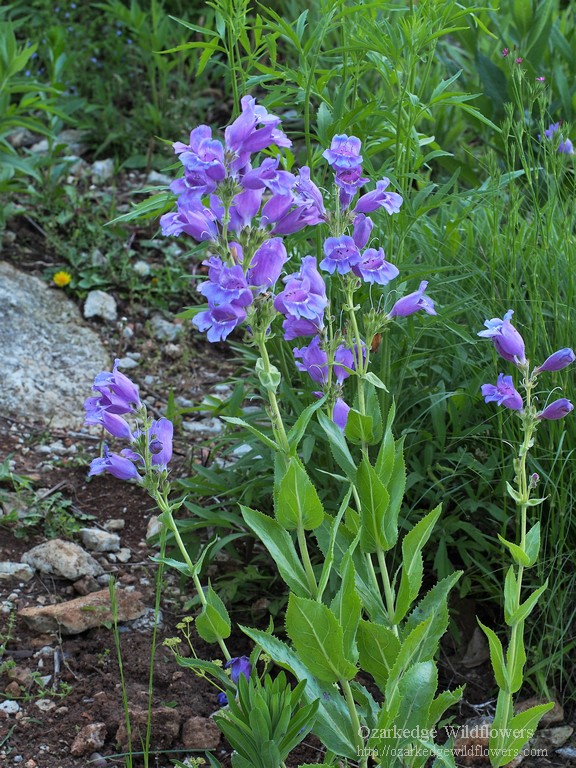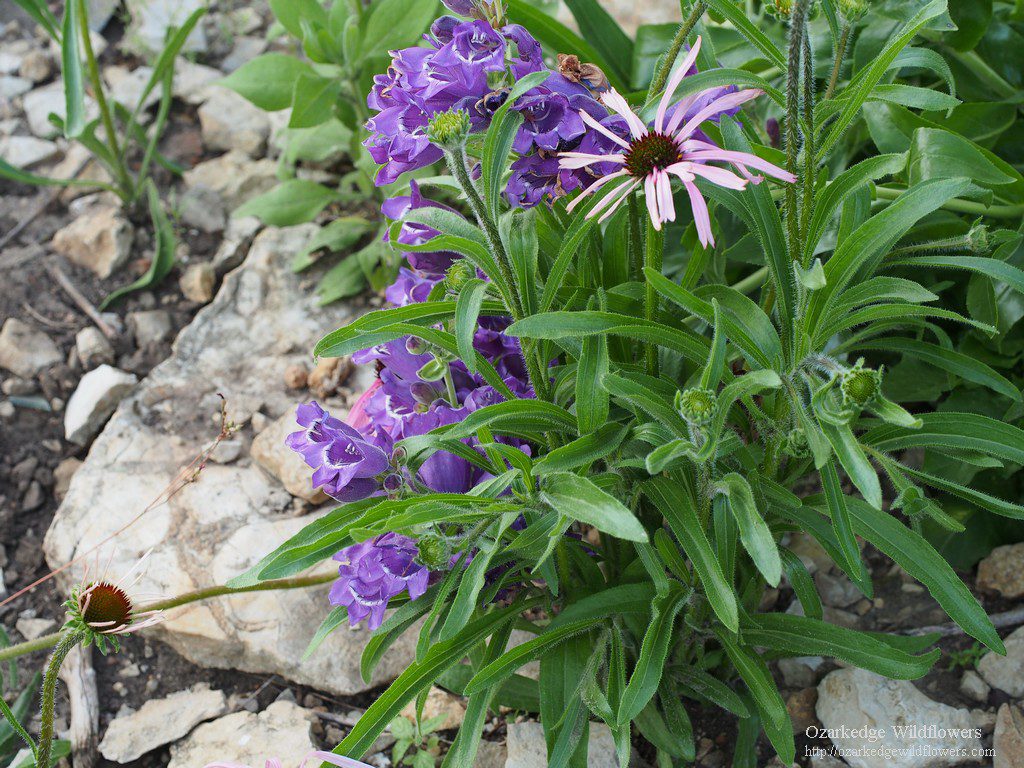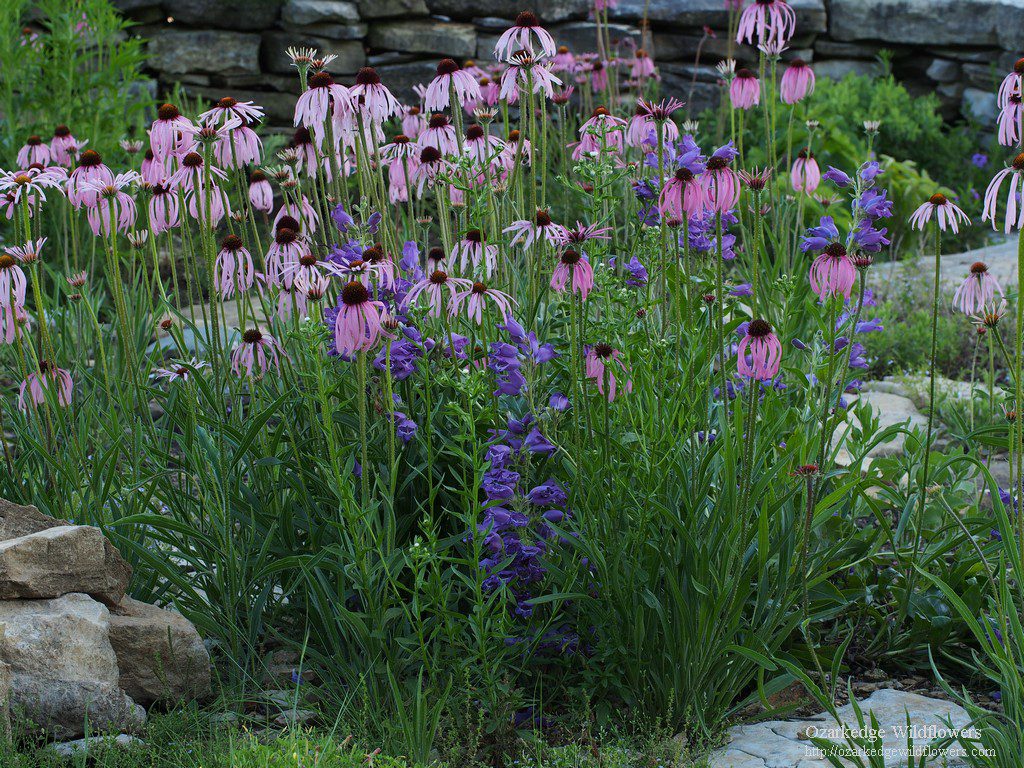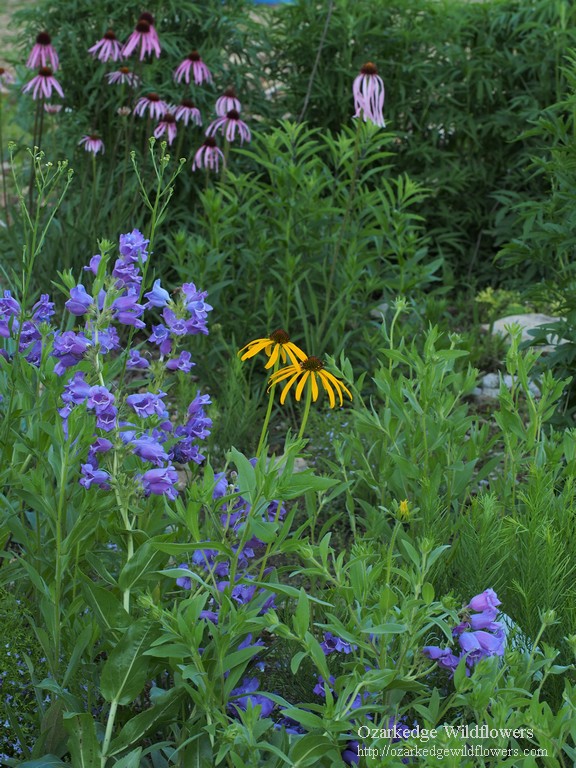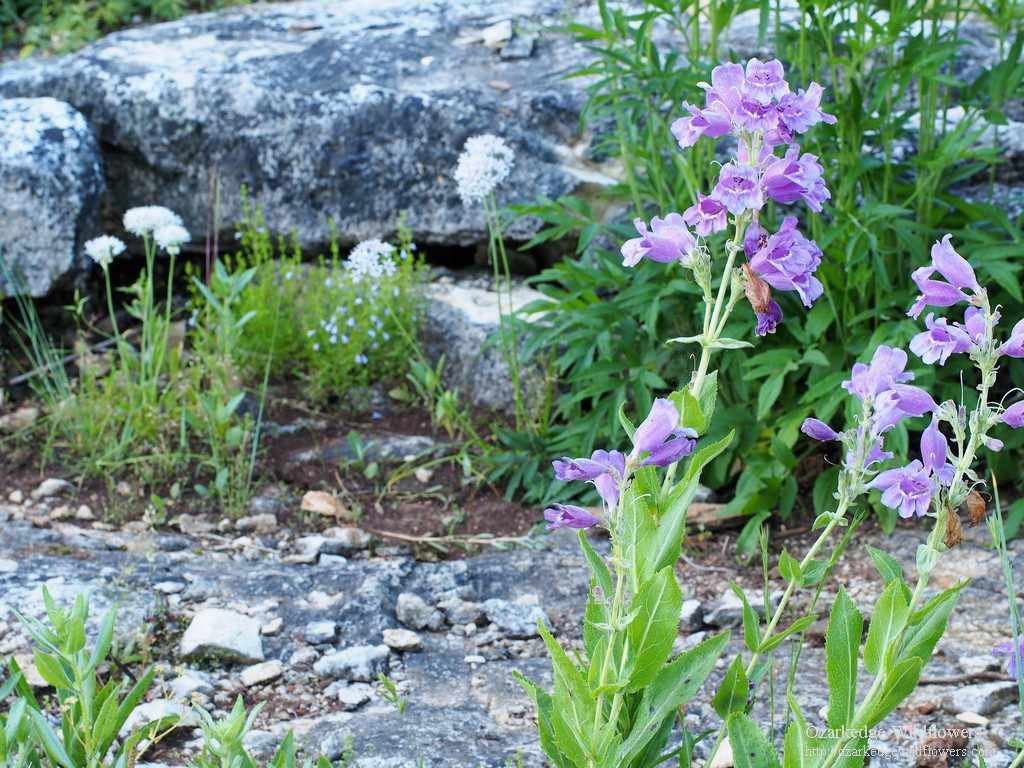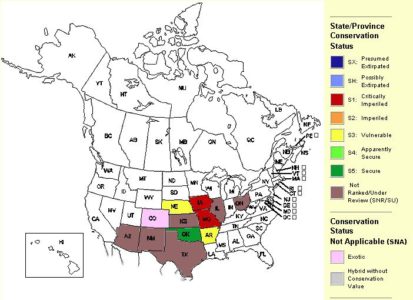Penstemon cobaea var. purpureus is perhaps the most beautiful wildflower on Ozarkedge. I first saw this rare penstemon while photographing native plants along a roadside near Ozarkedge. It was unexpected and I was thrilled to see it! My research showed that we are right on the edge of her native boundary, so I decided to see if I could introduce this beauty from seeds. I waited on the seeds to ripen and harvested a few to try my hand at propagating them. Of course, I first researched their requirements for propagation (this is an essential step for success – many wildflowers have specific needs). Seedlings appeared the next spring and one year later, I was rewarded with the first blooms! Now, Penstemon cobaea var. purpureus is fully established and reproduces readily on Ozarkedge. How thrilling to restore such a beautiful native plant!
Latin Name/Common Name- The word “penstemon” is derived from the Greek words ‘pente” meaning five and ‘stemon’ meaning thread and probably refers to stamen.
The common name of Showy beardtongue is absolutely fitting but I prefer the lesser used name of Purple ozark beardtongue.
Bloom Color- The more common (but still rare) white version of this plant is called Penstemon cobaea. The flowers are identical in all aspects to Penstemon cobaea var. purpureus except in color. The flowers of both are the largest of all of our native penstemons. As you can see from the pictures below, Purple ozark beardtongue displays a range of shades from dark purple to dark pink. Some of the most striking flowers have the variation of a paler color on the face.
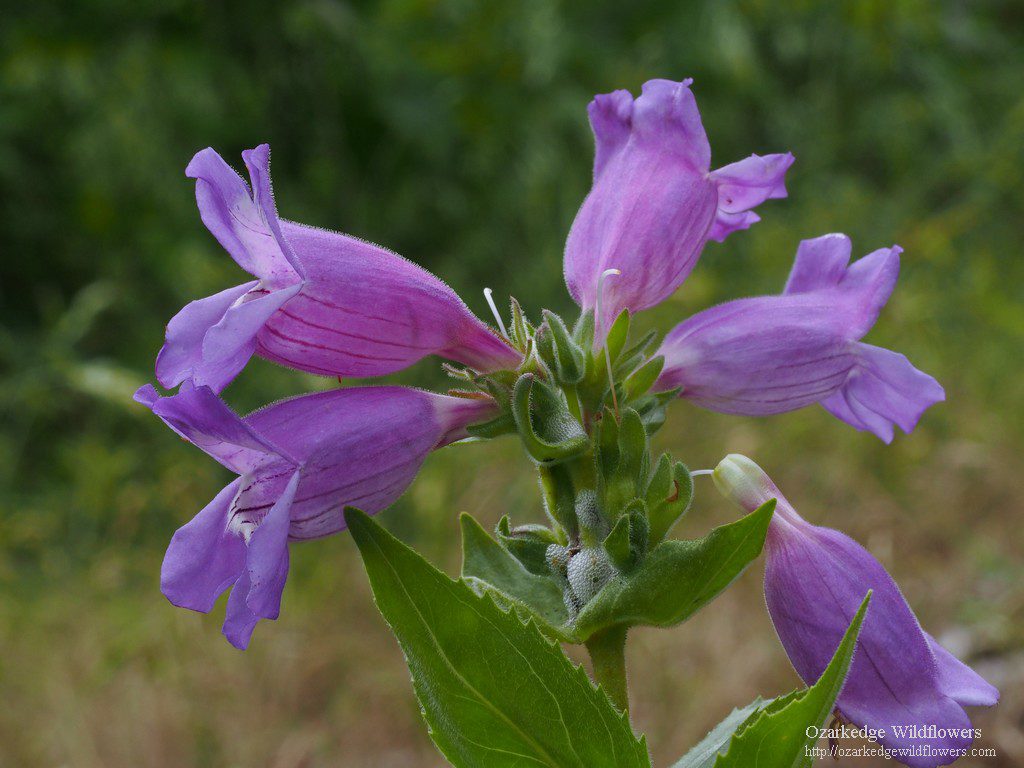 Dark pink corollas are a lovely contrast with the bright green foliage
Dark pink corollas are a lovely contrast with the bright green foliage
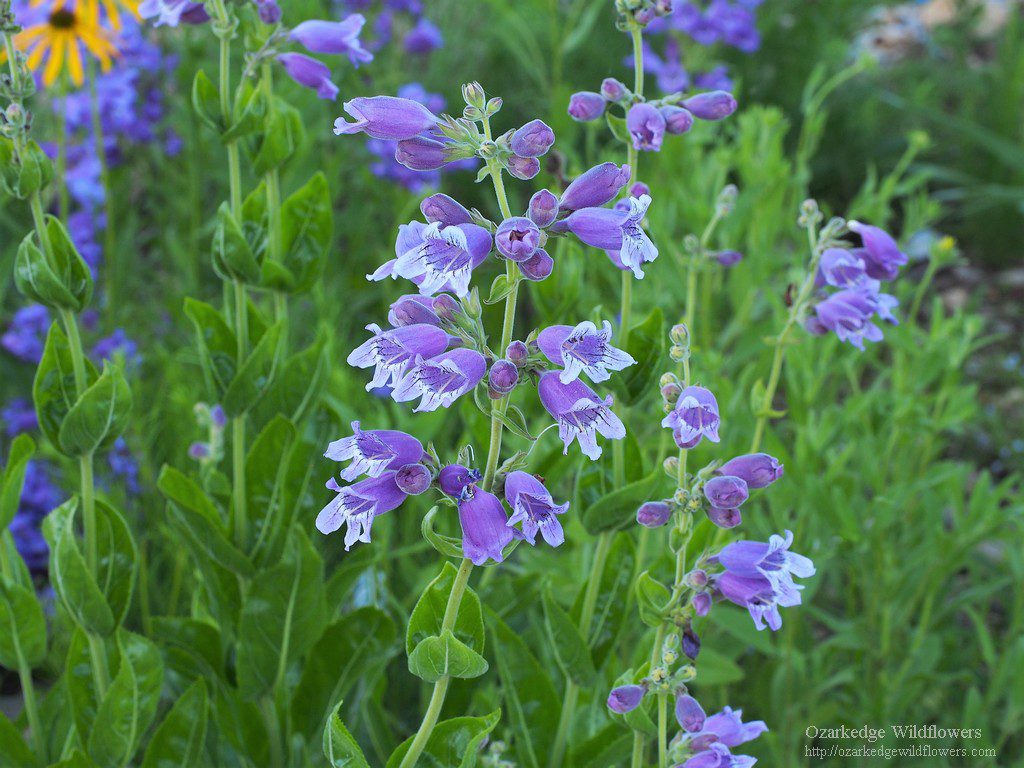 A beautiful color variation is a paler face of the corolla
A beautiful color variation is a paler face of the corolla
Description- Leaves are opposite and sessile. They have serrated edges and a beautiful waxy sheen. The stem, buds, and flowers are densely pubescent. The plant stands tall at a little more than 2 feet. Multiple stems with many flowers can be seen from a single plant. Occasionally, stems heavy with flowers will flop to the ground, especially after a storm. They still put on a beautiful show and I haven’t ever felt the need to stake them in the garden.
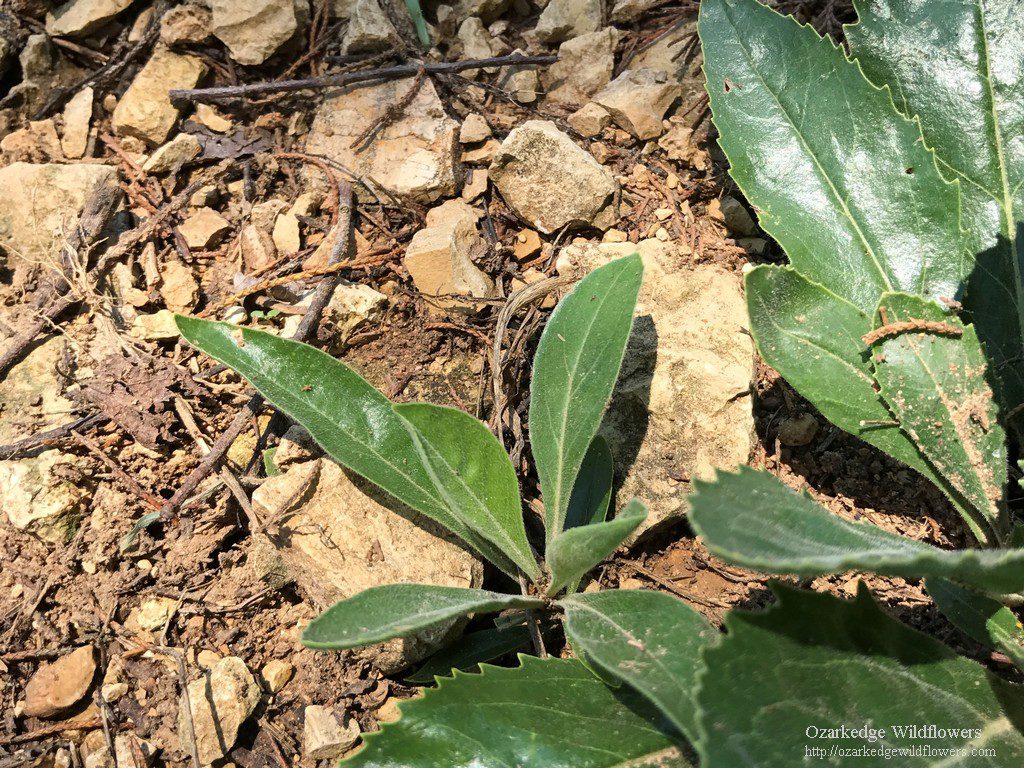 Shiny leaves of a basal rosette in its first season
Shiny leaves of a basal rosette in its first season
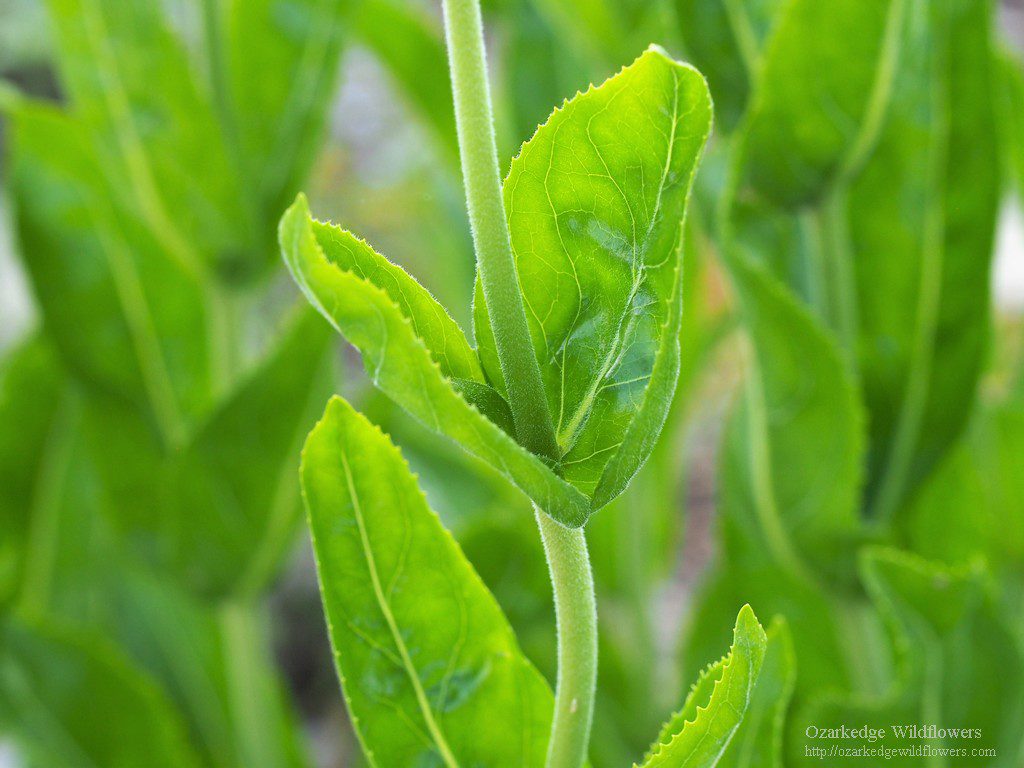 Young leaves in spring of mature plant- leaves are opposite, sessile and serrated
Young leaves in spring of mature plant- leaves are opposite, sessile and serrated
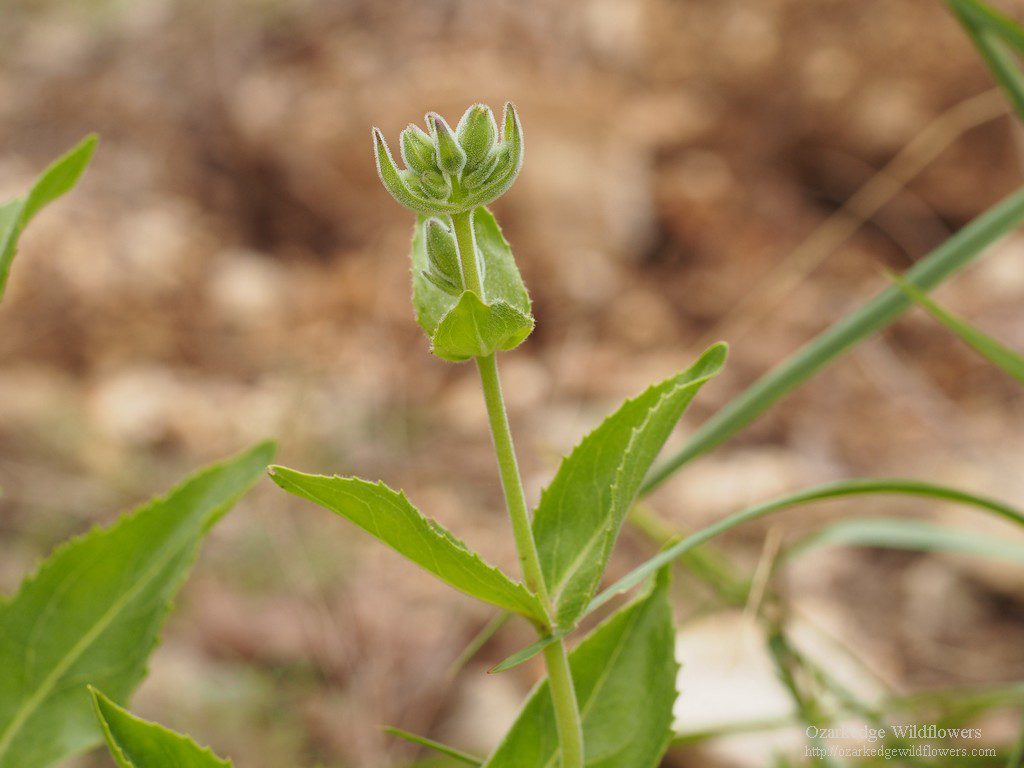 Early April buds promise flowers in May
Early April buds promise flowers in May
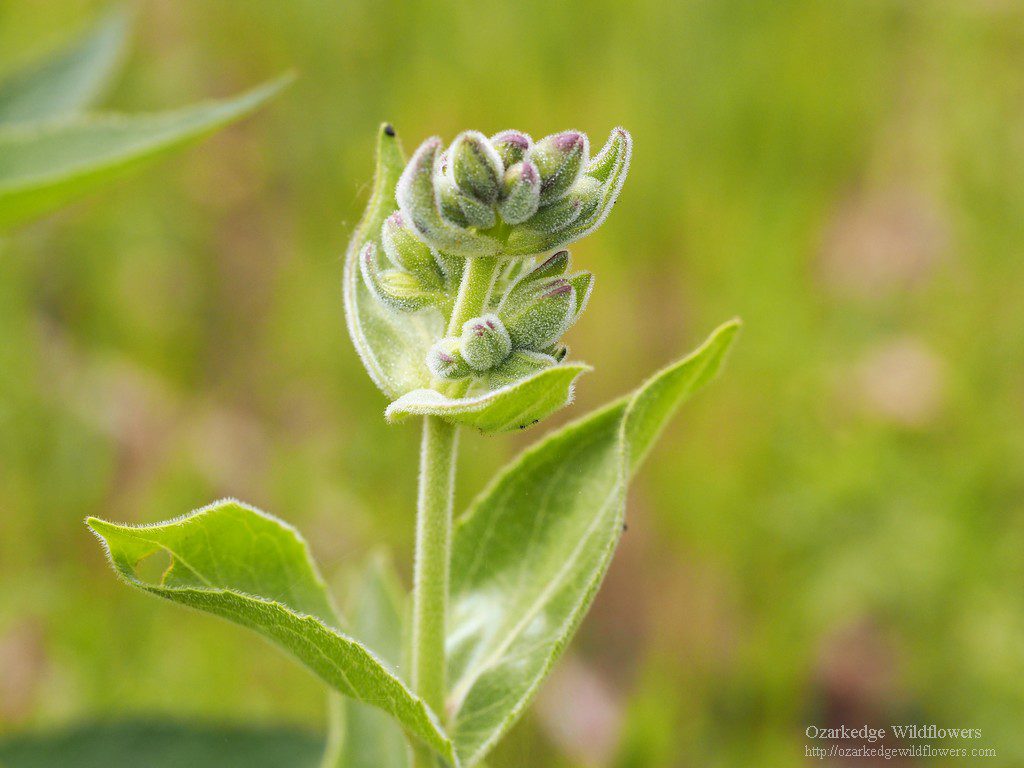 Marked pubescence of stem and buds
Marked pubescence of stem and buds
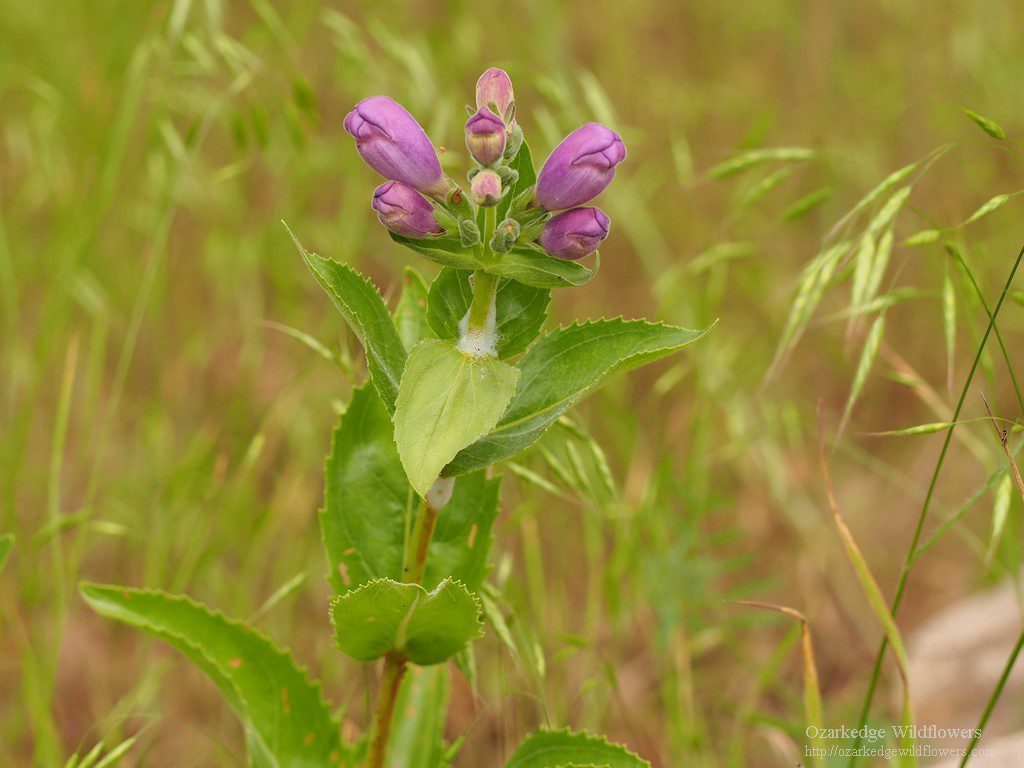 Multiple buds nearly ready to open
Multiple buds nearly ready to open
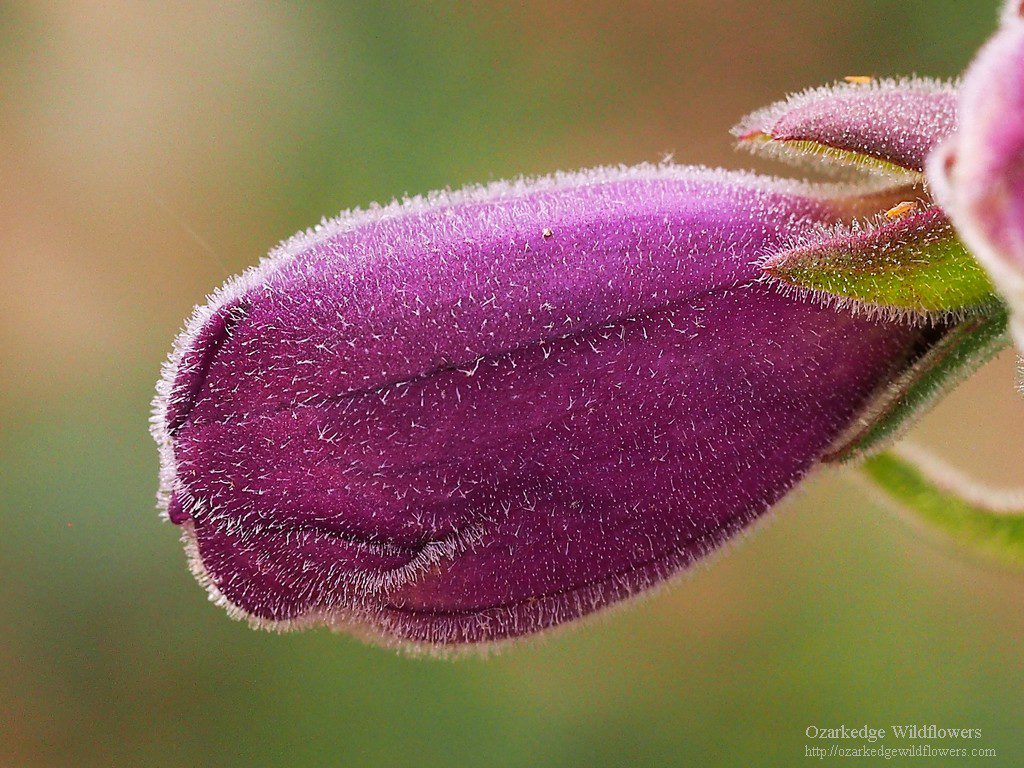 Magnified view shows the marked glandular pubescence of bud
Magnified view shows the marked glandular pubescence of bud
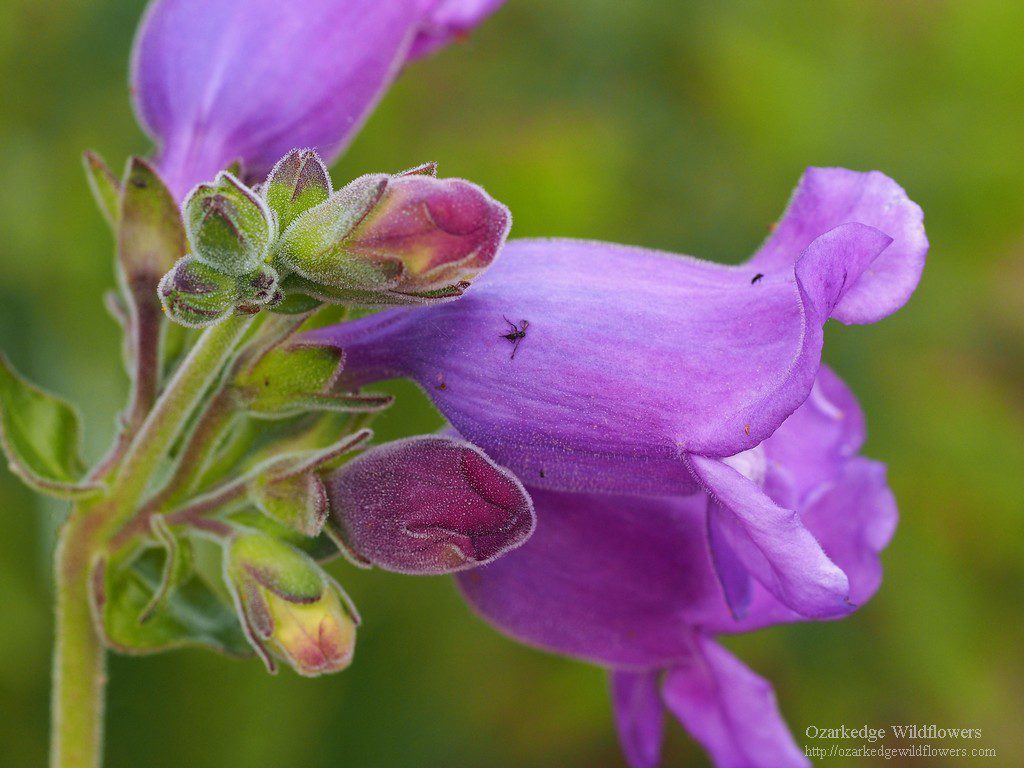 Side view of large tubular corolla
Side view of large tubular corolla
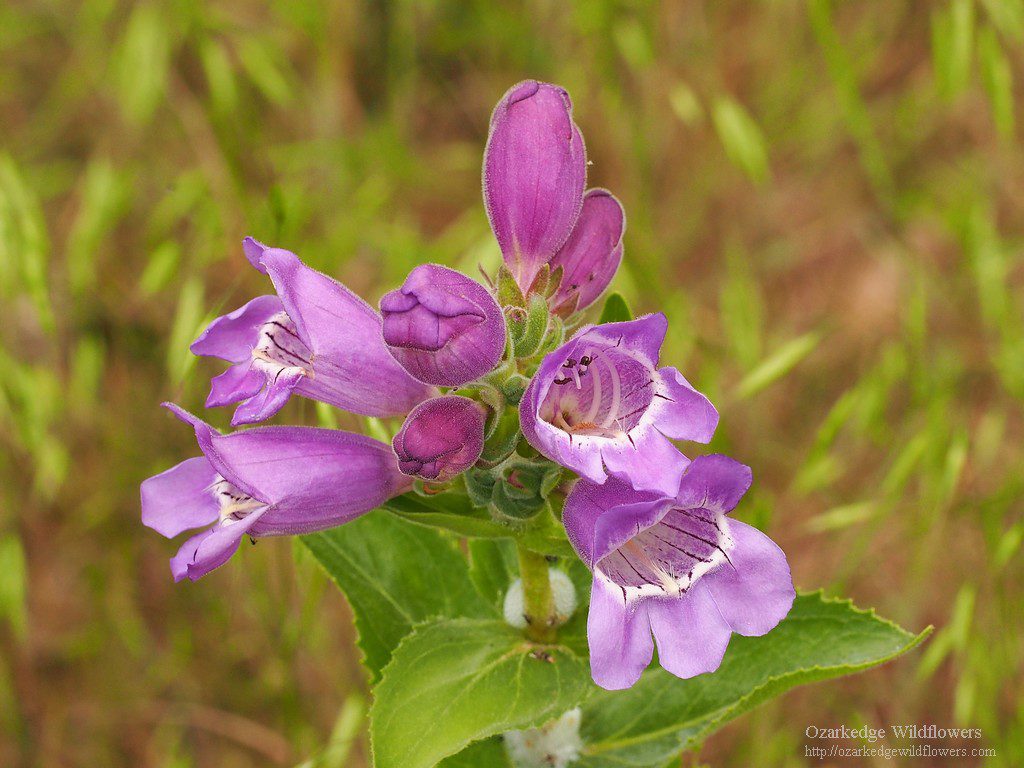 Dark purple lines inside corolla act as nectar guides
Dark purple lines inside corolla act as nectar guides
Bloom Time- On Ozarkedge, flowering begins in late April and extends through May. Sporadic flowering may be seen in June and July.
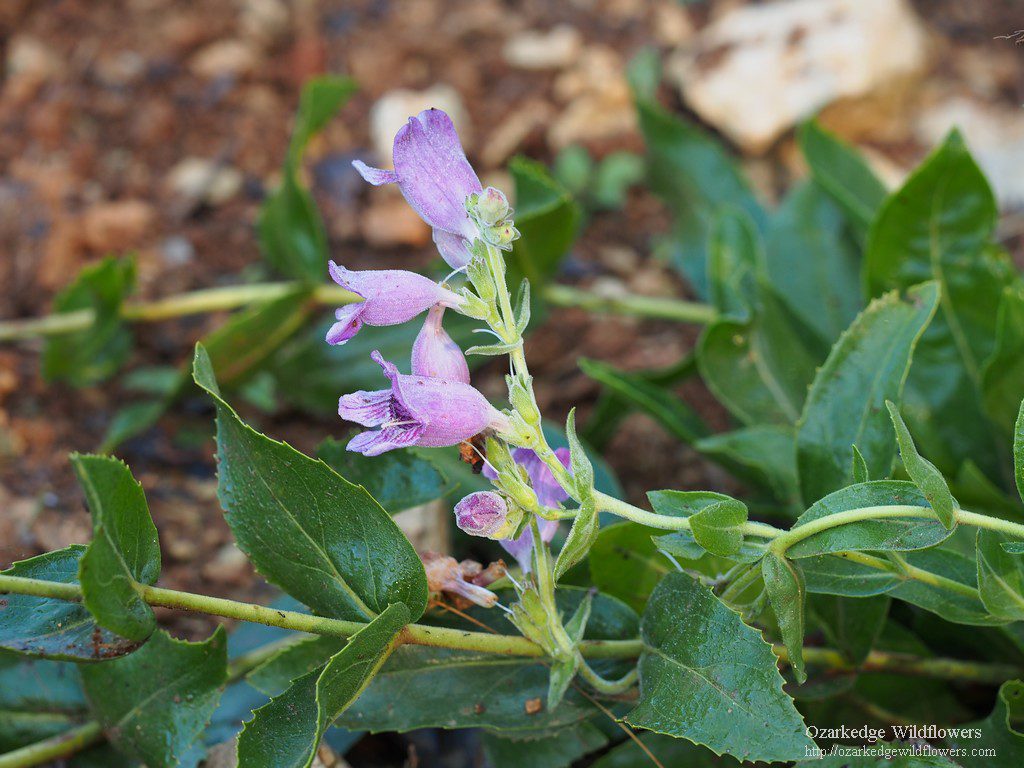 Late blooms are an unexpected pleasure in July
Late blooms are an unexpected pleasure in July
Habitat- Penstemon cobaea var purpureaus is most comfortable growing in rocky, limestone glades and open sunny areas. As I’ve mentioned, it’s easily started from seed and, in the right conditions, will bloom the second year.
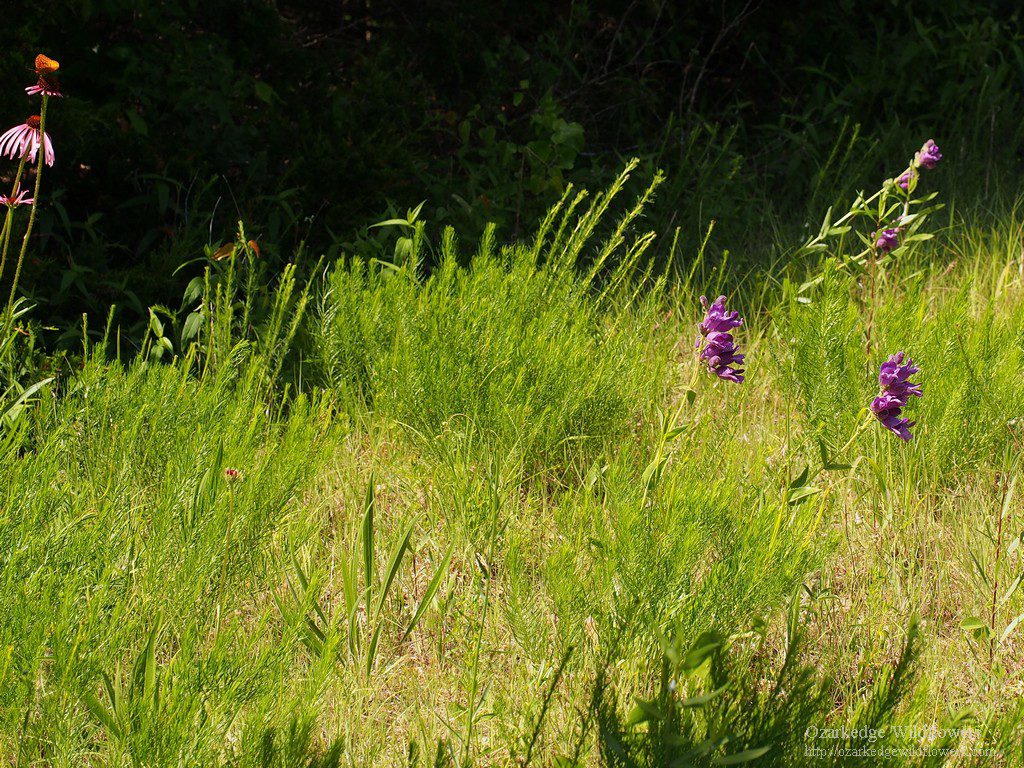
What’s Growing Nearby? There are many beautiful native flowers that can be found growing near Penstemon cobaea. One of the most commonly seen is our beautiful pink Glade coneflower- Echinacea simulata, which is often confused with Pale purple coneflower- Echinacea pallida. The rare yellow coneflower- Echinacea paradoxa may also be seen. Other native glade flowers you might find nearby include Baptisia australis, Callirhoe involucrata, Oenothera macrocarpa, Calamintha arkansana, Delphinium carolinianum, Allium canadense, Sedum pulchellum, and many more beautiful glade flowers.
Endangered List- The status of Penstemon cobaea var. purpureus is not clear to me. The variation purpureus is not documented in Natureserve or the USDA website. The white version- Penstemon cobaea – is shown on Natureserve. It’s listed as Vulnerable in Arkansas and Critically Imperiled in Missouri and Iowa *
*NatureServe. 2018. NatureServe Explorer: An online encyclopedia of life [web application]. Version 7.1. NatureServe, Arlington, Virginia. Available http://explorer.natureserve.org. (Accessed: November 14, 2018 ).
The Arkansas Natural Heritage Commision website includes Penstemon cobaea in its Rare Plants gallery. You can link to it here. It is also listed in the Rare Plants of the Ozark Plateau… a Field Identification Guide. This softcover book was published by the Forest Service in 1978.
Interesting Tidbits- Information on propagating many native wildflower seeds can be obtained from multiple source s. An excellent resource online is Prairie Moon Nursery. They have germination codes for many native wildflowers. My favorite book on the topic is Growing and Propagating Wildflowers– by Harry R. Phillips. It was published in 1985 and you can often find used copies on Amazon and Barnes and Noble for a good price.
Bumblebees are a common pollinator of Penstemon cobaea. They will crawl inside the tubular corolla and buzz from flower to flower as they pollinate. Take a look at this short video showing a busy bee working the penstemons!
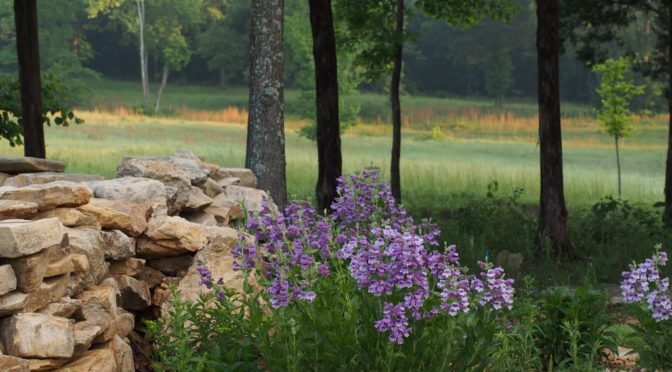
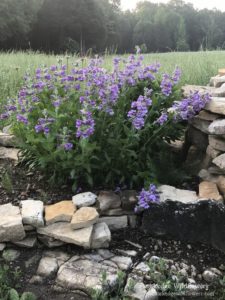 This spectacular group of flowers are from two 2-year-old plants started from seed and transplanted into the garden
This spectacular group of flowers are from two 2-year-old plants started from seed and transplanted into the garden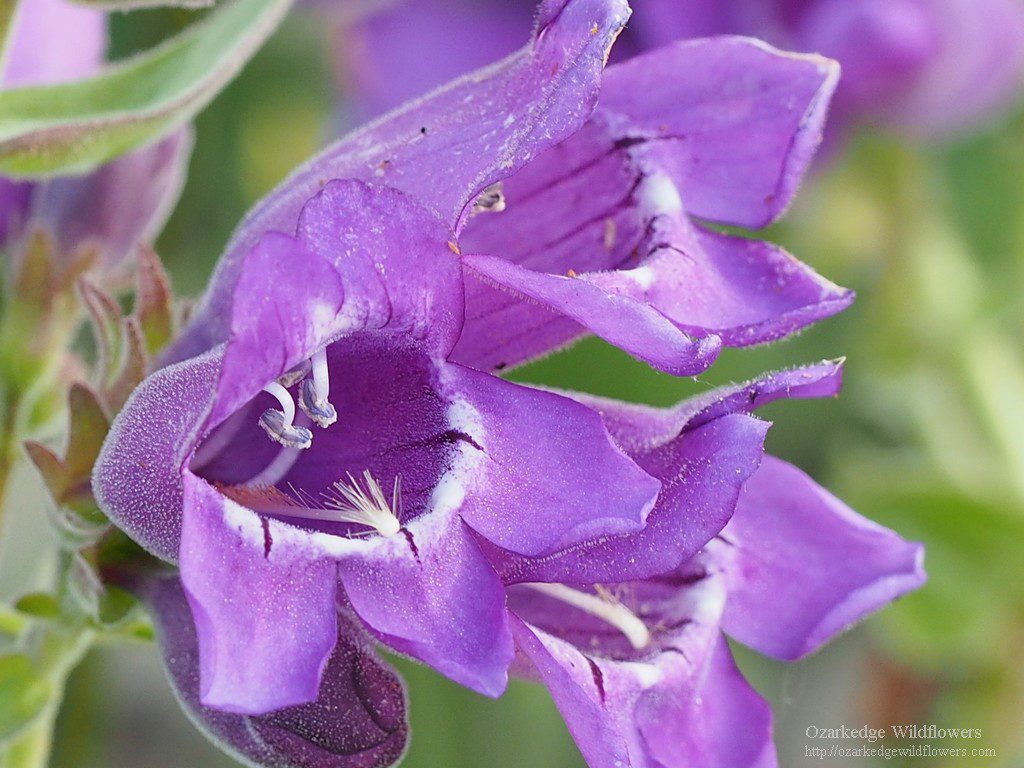 White lip at corolla entrance
White lip at corolla entrance 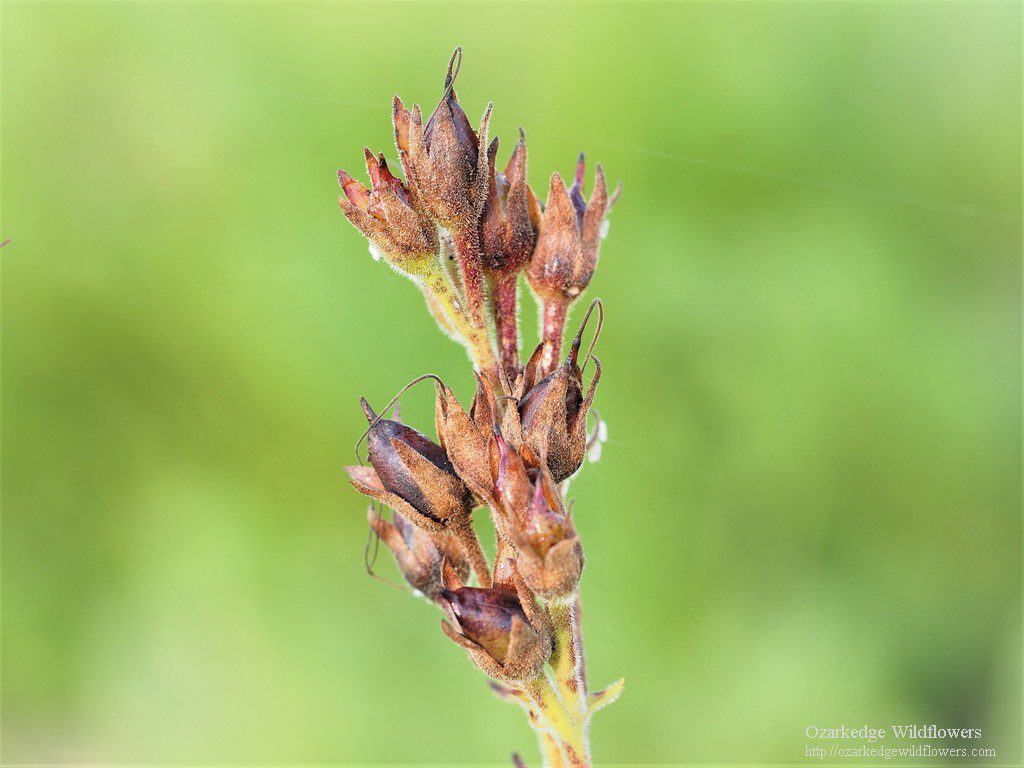 Nearly ripe seed pods
Nearly ripe seed pods